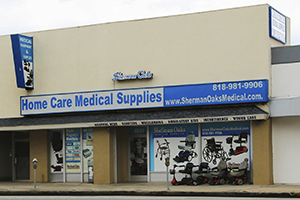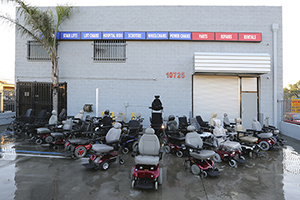Hospital Beds Guide
A specialized bed, known as a hospital bed, is essential for the care of individuals dealing with illness. Available for purchase or rental at medical supply stores, these beds typically resemble twin beds crafted from sturdy metal components. Featuring movable side rails, the bed's position can be adjusted using hand cranks or electric controls. Consult with your caregiver to determine the most suitable bed type for your needs.
Why do I need a hospital bed?
A hospital bed might be necessary if you or a family member is unwell or recuperating from an illness at home. These beds come in manual or electric variants, with electric beds generally being more user-friendly. Hospital beds offer the flexibility to adjust bed positions, allowing you to raise or lower the head, knees, or foot of the bed. This can facilitate easier breathing and increased comfort for the person in bed. Additionally, the overall height of the bed can be altered, providing greater comfort for caregivers assisting individuals in bed. With electric beds, these adjustments can often be made effortlessly by pressing a button, eliminating the need to seek assistance.
What kind of hospital bed should I use?
When choosing a bed, think of your needs, as well as the needs of those caring for you. There are several kinds of hospital beds to choose from. Your caregivers will help you choose the bed that is right for you.
Manual hospital bed:
With this bed you need to change bed positions by hand using cranks. If you are unable to do this, you will need to ask someone to help you. The cranks are located at the foot or head of the bed. Manual beds may not move to as many positions as an electric bed. Most manual beds can be raised to make it easier for caregivers to help you. The bed may also be lowered to make it easier for you to get in and out of bed. A manual bed may be very difficult for a person who has limited hand or arm strength to use. You may need good hand strength to turn the cranks. A person with a back condition or knee problems may also have trouble. A person may need to bend or kneel to use the bed cranks.
Electric hospital bed:
An electric bed has a motor and a cord to plug into an electrical outlet. There is a control pad hooked to the bed that may look like a television remote control. Each button on the control may have a picture showing how the bed will move when you push the button. Many people like an electric bed because the positions of the bed can be changed easily. These beds may also have a built in scale for weighing a person.
What kind of mattress should I use?
There are many kinds of mattresses available for a hospital bed, including mattresses filled with air, gel, or foam. Some special mattresses can reduce pressure on certain body areas, and help prevent pressure sores. You can buy or rent the mattress at the same supply store where you buy or rent the bed. The mattress usually comes with a waterproof cover. You may need other pads or bed attachments. Ask your caregiver for information about renting extra bed equipment if needed.
Where should the bed be placed in the home?
Place a hospital bed where there is enough room for it when it is in any position. Put the bed in a place where there is room on the sides of the bed to walk around. Be sure others can hear you if you are in bed and call for help. You may want to place the bed near the bathroom. You may want to place it on the main level to avoid having to climb stairs. Place the bed away from windows or doors where they may be cold drafts of air. The best place for a bed may not be a bedroom. Put the bed in a room close to where the family activities are, but still providing privacy.
What should I know about safety while using a hospital bed?
- Keep the wheels of the bed locked at all times. Unlock the wheels only if the bed needs to be moved.
- Put a bell and a telephone within reach of the bed. These should be available so the person may call for help when needed.
- Keep the side rails up. If there is danger of the person falling off the bed, keep the rails up at all times.
- Never light matches, candles or smoke while in or around the bed. Do not let others smoke or light matches or candles near your bed.
- Follow the specific manufacturer's instructions for using the bed.
- Put night lights where needed. Night-lights may help prevent falls.
- If a footstool is needed for the person the get out of bed, make sure it is strong and stable.
- Put the bed control pad within easy reach of the bed for the person to adjust positions. Learn to use the control panel, and practice the different positions. Test the bed's hand and panel controls to be sure the bed is working correctly. Some hospital bed controls may be locked so that a person in bed cannot change bed positions themselves. If the bed has this "locking" feature, test it to be sure it is working correctly.
- Check for cracks and damage to the covering of the all bed controls. If covers are damaged, liquids may get into the controls. This may cause them to stop working, and may cause a fire.
- Have a professional look at all parts of the bed, as well as the floor beneath and around the bed for dust and lint build-up. These areas should be kept clean.
- Call the bed manufacturer or another professional if there are burning smells or unusual sounds coming from the bed. Do not use the bed if there is a burning smell coming from it. Call if the bed controls are not working correctly to change positions of the bed.
What should I know about using electrical outlets and extension cords for the hospital bed?
- Check the bed's power cord for damage. It may be crushed, pinched, sheared, cut or worn through. Do not place furniture (such as rocking chairs) away from the cord. Avoid placing or rolling the bed over the power cord.
- Do not allow clothing, sheets, blankets, books, or anything else to be in contact with a wall outlet. Do not let these items get stuck between the cord and outlet when the bed is plugged in. This may cause a fire, or damage the cord or the plug.
- Do not place a rug or carpet over the power cord for the bed, or anything else. Carpets and rugs may cause the cord to heat up too much, and lead to a fire. Do not place the cord in a location where people walk, as this may cause falls and damage the power cord.
- Do not use an extension cord, or a power strip having more than one plug-in outlet. Any damage to these can cause a fire. If you must use an extension cord or power strip, have a professional check it before using it. It will also need to be checked regularly for as long as you use it. Avoid using outlet boxes that more than one cord may be plugged into. If you must use an outlet box, place it where there is no risk of damage or spilling liquids.
- Plug the power cord from the bed directly into an outlet on the wall. Have a professional check the outlet to see if it is working correctly. The outlet should also be checked to be sure it is the right type for the cord. The prongs (blades) on the plug should be tight. The cord should fit tightly into the outlet. The plug, outlet and wall plate should not be chipped or cracked.
- When adjusting the head, foot, or any part of the bed, be sure the bed is able to move freely. It should extend to its full length, and adjust to any position. Be sure bed movement does not affect the bed's power cord, plug, or outlet. Hand control and power cords should not be threaded through moving parts of the bed, or through bed rails. Watch the hand control cables and the power cord as you are adjusting the bed. Normal bed movement should not pinch or damage these cords.
What other things may be done so that I am more comfortable?
- If there is a television near the bed, place it so that it is seen clearly from the bed.
- Keep a glass and pitcher of water, tissues, hand lotion, and other personal items within easy reach.
- Place a wastebasket next to the bed.
- Put a bedside commode (portable toilet) beside the bed if needed.
What are the advantages of having side rails on the bed?
- Providing a place to fasten bed controls that is within easy reach of the person in bed.
- Provides a place to hold on to when getting into or out of bed.
- Side rails may allow a person in bed to help with repositioning (turning) themselves.
What are the dangers of having side rails on the bed?
- Injury from a fall if a person climbs over the bed rail and falls. You may have a higher risk of injury than falling from the bed itself. The fall may be more awkward, causing more serious injury.
- Injury if a part of the body gets caught between the bed rails, or the bed rails and the mattress.
Our service area covers most of Southern California including Los Angeles and surrounding cities.
To see a full list of cities covered in our service area please click here.
- Agoura Hills
- Alhambra
- Altadena
- Arcadia
- Arleta
- Artesia
- Avalon
- Azusa
- Baldwin Park
- Bel Air
- Bell
- Bell Gardens
- Bellflower
- Beverly Hills
- Bradbury
- Brentwood
- Burbank
- Cahuenga Pass
- Calabasas
- Camarillo
- Canoga Park
- Carson
- Cerritos
- Chatsworth
- Claremont
- Commerce
- Compton
- Covina
- Cudahy
- Culver City
- Diamond Bar
- Downey
- Duarte
- Eagle Rock
- El Monte
- El Segundo
- Encino
- Gardena
- Glendale
- Glendora
- Granada Hills
- Hawaiian Gardens
- Hawthorne
- Hermosa Beach
- Hidden Hills
- Huntington Park
- Industry
- Inglewood
- Irwindale
- Kagel Canyon
- La Canada
- La Crescenta
- La Habra Heights
- La Mirada
- La Puente
- La Tuna Canyon
- La Verne
- Lake Balboa
- Lake View Terrace
- Lakewood
- Lancaster
- Lawndale
- Lomita
- Long Beach
- Los Angeles
- Lynwood
- Malibu
- Manhattan Beach
- Marina Del Rey
- Maywood
- Mission Hills
- Monrovia
- Montebello
- Monterey Park
- Montrose
- NoHo Arts District
- North Hills
- North Hollywood
- Northridge
- Norwalk
- Oak Park
- Olive View
- Oxnard
- Pacific Palisades
- Pacoima
- Palmdale
- Palos Verdes
- Panorama City
- Paramount
- Pasadena
- Pico Rivera
- Pomona
- Porter Ranch
- Redondo Beach
- Reseda
- Rolling Hills
- Rosemead
- San Dimas
- San Fernando
- San Gabriel
- San Marino
- Santa Barbara
- Santa Clarita
- Santa Fe Springs
- Santa Monica
- Sepulveda
- Shadow Hills
- Sherman Oaks
- Sierra Madre
- Signal Hill
- Simi Valley
- South El Monte
- South Gate
- South Pasadena
- Stonehurst
- Studio City
- Sun Valley
- Sunland
- Sylmar
- Tarzana
- Temple City
- Thousand Oaks
- Toluca Lake
- Toluca Woods
- Topanga
- Torrance
- Tujunga
- Valencia
- Valley Glen
- Valley Village
- Van Nuys
- Ventura
- Vernon
- Walnut
- Warner Center
- West Covina
- West Hills
- West Hollywood
- West Toluca
- Westlake Village
- Westwood
- Whittier
- Winnetka
- Woodland Hills




 Accreditation Commission for Health Care
Accreditation Commission for Health Care
 RESNA Accredited
RESNA Accredited





